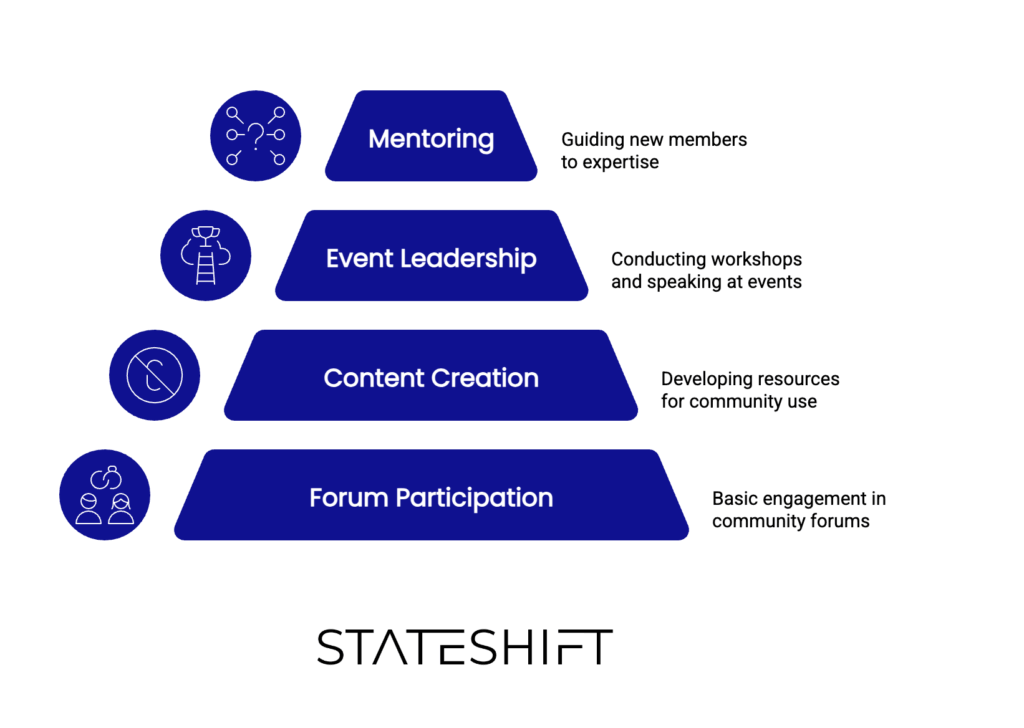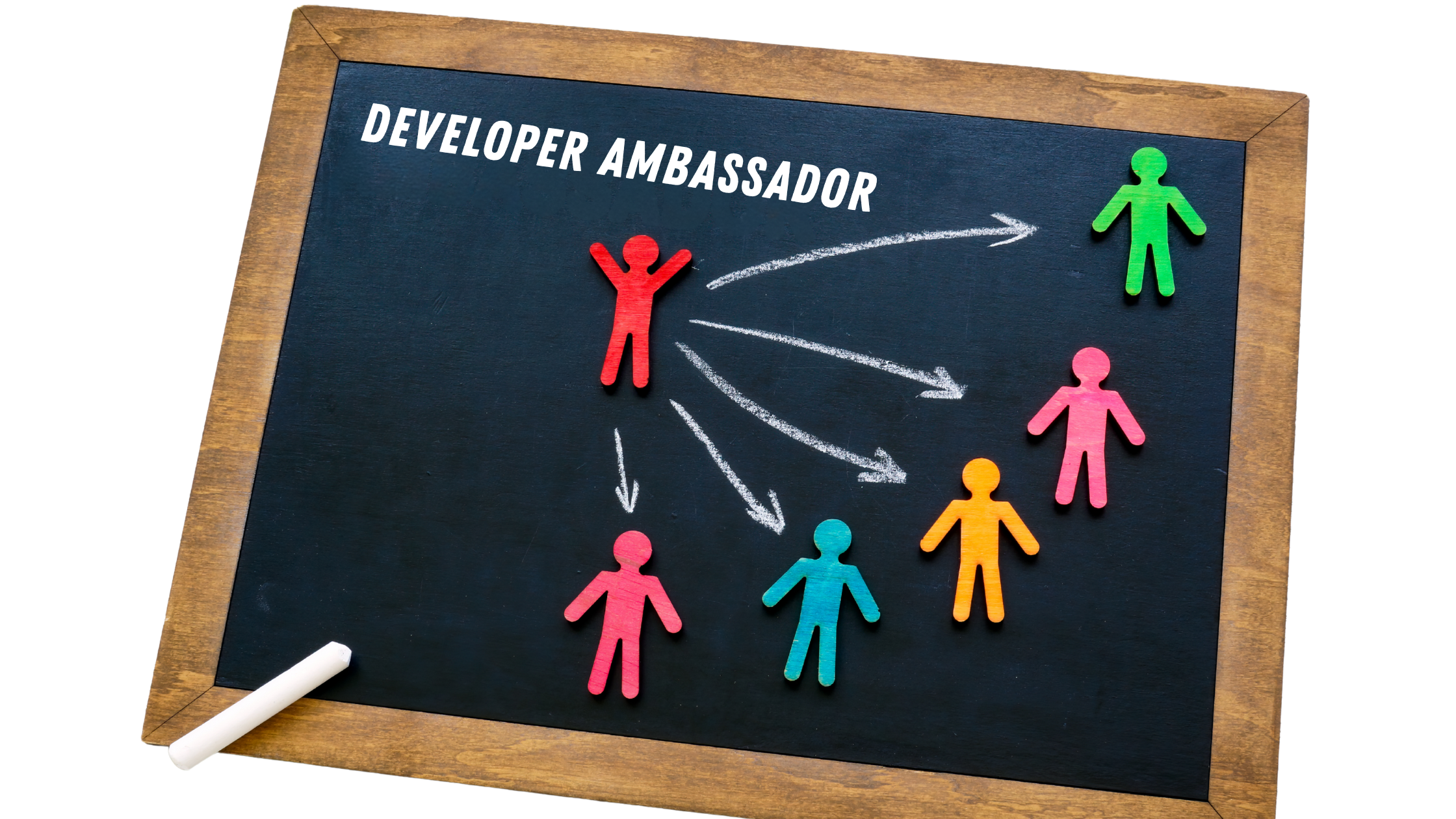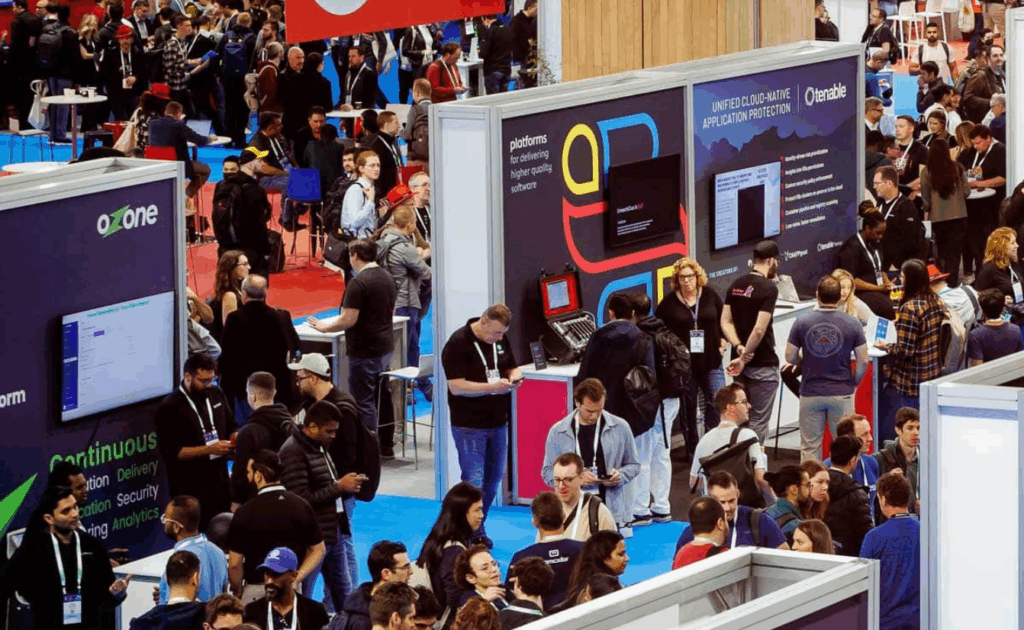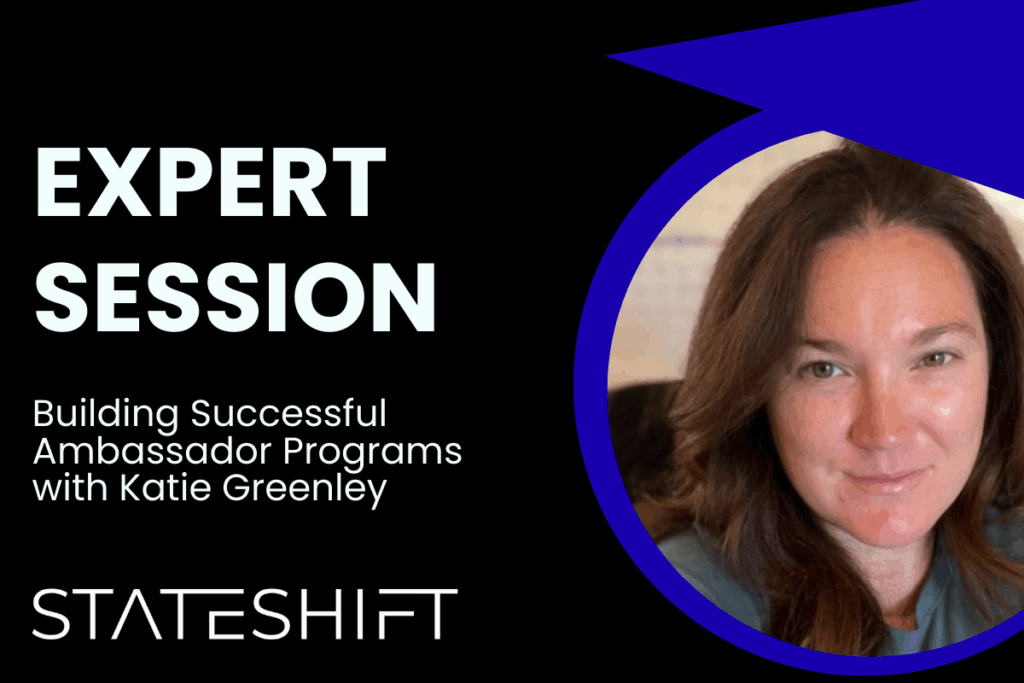Building an effective developer ambassador program starts with recognizing and activating your most valuable contributors. The companies that succeed don’t treat developer advocacy as random conference talks and blog posts.
They build systematic developer ambassador programs that turn power users into amplifiers of your product’s value, with clear criteria for participation, meaningful rewards, and measurable business impact.
The cornerstone of effective developer advocacy is a well-structured ambassador or MVP program. You’ve got power users who already love your product. They’re active in your community, answering questions, creating content, showing up to events.
The logical next step is formalizing a program to recognize and amplify their contributions.
Yet most companies launch these programs and watch them stagnate within six months. Initial enthusiasm fades. Contributors aren’t much more active than before. Some stop participating entirely after achieving their “elite” status. The program exists, but it’s not driving the ecosystem growth you expected.
Why Developer Ambassador Programs Fail
The typical approach treats ambassador status as a destination rather than a continuous commitment. Once someone achieves MVP status, there’s no compelling reason to maintain that level of activity. They’ve already got the badge, the swag, and the recognition.
We see this consistently in our work with companies building developer ecosystems. They set the bar for entry, people clear it, then activity drops off because the criteria focused on past contributions rather than ongoing value creation. The program becomes a roster of names rather than a group of active contributors.
The second common failure is measuring success by program size. Leadership asks “How many ambassadors do we have?” and that number becomes the metric. So you lower the bar to grow the program.
More people qualify, but the exclusivity and meaning of the status dilutes. Now you’ve got 50 ambassadors and maybe 10 who are actually active.
Platform choice compounds these problems. We recently worked with a company that had moved their community to a platform built for support ticketing, not community engagement. They couldn’t easily track the activities that mattered. They couldn’t create the spaces where ambassadors could engage beyond forum posts. The technical foundation made it nearly impossible to run an effective program regardless of how w ell they designed the criteria.
We explored these failure patterns in depth during a recent Stateshift Live session with Katie Greenley, who built a successful developer ambassador program at the CNCF. The most consistent pattern across failing programs: they optimize for recognition rather than ongoing value creation.
The Framework: Build for Ongoing Value Creation
The most effective developer ambassador programs we’ve implemented share three characteristics: ruthlessly clear criteria, meaningful renewal requirements, and rewards that scale with contribution level.
Set Elite-Level Criteria
Start with criteria that represents the top 1-5% of your community. Not the top 20%. Not everyone who’s reasonably active. The elite tier that others aspire to reach. This selectivity is what makes the status meaningful.
But here’s what separates functional programs from excellent ones: the criteria must focus on how ambassadors set others up for success, not just their own product expertise.
Someone who answers 100 forum questions is valuable. Someone who creates content that enables 50 others to solve problems themselves is more valuable. Someone who mentors new community members and brings them up to expertise level is even more valuable.
We worked with a company that restructured their developer ambassador program around this principle. Instead of counting forum posts, they created a weighted point system:
| Activity Type | Multiplier |
|---|---|
| Forum participation | 1x |
| Published content (blog posts, tutorials) | 3x |
| Mentoring new contributors | 4x |
| Speaking at events or running workshops | 5x |

The weighting reflected the amplification effect of each activity type. A blog post reaches more people than a single forum answer. A workshop enables multiple people simultaneously. Mentoring creates future ambassadors.
Build in Renewal Requirements
The most effective programs incorporate point decay. For example, reducing point totals by 25% each quarter means ambassadors must maintain activity to keep their status. No coasting on past contributions.
While the initial pushback can be significant, programs that implement this approach typically see active ambassador groups become genuinely elite within six months. Average contribution levels often triple because only the most committed people stay in the program.
This renewal requirement solves a fundamental fairness problem. Without decay, anyone who joined the program early has an insurmountable advantage. They’ve already accumulated status that newcomers can never match, regardless of current contribution levels. Decay mechanisms level the playing field and ensure the program recognizes ongoing value creation rather than rewarding historical activity.
Implementation: Start With Your Metrics
Before you design criteria or plan rewards, define what success looks like for the program itself. Not for individual ambassadors, for the program’s business impact.
The two metrics that matter most:
Ambassador NPS: Would your ambassadors recommend that others invest the effort to achieve ambassador status? If the answer is no, your reward structure isn’t working. The program isn’t providing enough value relative to the effort required.
Influence hours per ambassador: Calculate the time ambassadors invest in activities, weighted by impact. If an ambassador creates a blog post that takes them three hours, that’s three influence hours. If they participate in 100 forum threads at an estimated five minutes each, that’s roughly eight hours. Track the average across all ambassadors. This number should trend up over time as you refine the program.
These metrics tell you if the program is healthy before you look at secondary indicators like ecosystem growth or community engagement rates.
Document Your Criteria Framework
For the criteria itself, start with a single-page document. List every way ambassadors can contribute: forum participation, content creation, event speaking, mentoring, product feedback sessions, beta testing. Then assign point values and multipliers based on amplification effect and effort required.
Make the total points required to achieve and maintain ambassador status high enough that it’s genuinely difficult. In our experience, if more than 5% of your active community qualifies, the bar is too low.
Designing Effective Rewards
The reward structure needs to work on two levels. Extrinsic rewards are tangible: early access to products, direct lines to product teams, speaking opportunities, meaningful swag (not t-shirts, think hardware and professional-grade tools).
We’ve seen companies send everything from high-end monitors to annual conference passes to custom mechanical keyboards. The key is that ambassadors should feel genuinely taken care of, not given leftover marketing materials.
Intrinsic rewards matter more for long-term retention. Access to the product roadmap and the ability to influence it. Private channels with other ambassadors and company leaders. First priority for speaking at company events. Recognition in ways that enhance their professional reputation, not just their standing in your community.
One company we work with created a quarterly feedback session where ambassadors present directly to the executive team.
The sessions run for two hours. Ambassadors bring their toughest product critiques and their most ambitious feature requests. The executive team listens, asks questions, and commits to transparent follow-up. This access became the most valued part of the program because it gave ambassadors real influence over the product they were invested in.
Map Rewards to Pain Points
To determine which rewards will resonate, create a spreadsheet listing your potential benefits across the top. In the first row, add the major pain points your target audience faces: staying current with product updates, budget constraints for tools, limited access to product teams, and difficulty building a professional reputation.
For each benefit, score from 1-10 how well it addresses each pain point. A quarterly executive feedback session might score a 10 for “limited access to product teams.” A library of prerecorded tutorials might score a 3 for the same pain point. This scoring reveals which rewards deliver the most value to your specific audience.
Measuring What Matters
Beyond the core metrics of NPS and influence hours, track renewal rates. What percentage of ambassadors maintain their status each quarter? If it’s below 60%, either your criteria is too demanding or your rewards aren’t compelling enough. If it’s above 90%, you’re probably not maintaining high enough standards.
Track the ratio of organic applications to invited ambassadors. Healthy programs generate interest. People should be asking how to qualify, not waiting for you to notice them. If all your ambassadors come from outreach, your program isn’t visible enough or the value proposition isn’t clear.
Finally, measure downstream effects. Are ambassador-created resources getting used? Are the forum threads they participate in getting more views and higher satisfaction scores? Are they successfully mentoring new contributors who go on to become active community members themselves?
The program should create a multiplier effect, not just recognize existing activity.
Common Questions About Developer Ambassador Programs
What is a developer ambassador program?
A developer ambassador program formally recognizes and supports your most active community contributors who create content, answer questions, speak at events, and help other users succeed with your product. Effective programs require clear participation criteria, renewal requirements, and meaningful rewards that scale with contribution level.
How do you recruit developer ambassadors?
Use both invitation and application processes. Directly invite your top 1-5% of contributors based on measurable activity, while maintaining an open application process so others can self-nominate. This combination ensures you don’t miss active members while making the path to ambassador status clear and achievable.
What criteria should developer ambassador programs have?
Focus on activities that help others succeed, not just individual expertise. Weight different contribution types by their amplification effect: forum participation (1x), published content (3x), speaking engagements (5x), and mentoring (4x). The total threshold should be difficult enough that only 1-5% of your active community qualifies.
How do you measure ambassador program success?
Track two primary metrics: Ambassador NPS (would they recommend others invest effort to join) and influence hours per ambassador (time invested in activities, weighted by impact). If Ambassador NPS is low, your rewards don’t match the effort required. If influence hours aren’t increasing, your program isn’t maintaining high enough standards.
Building Your Ambassador Program
Through our work with companies building developer ecosystems, we see the same pattern repeatedly: most developer ambassador programs fail because they treat status as a destination rather than an ongoing commitment.
The programs that succeed share three core elements: elite-level criteria that only the top 1-5% can achieve, meaningful renewal requirements that prevent coasting on past contributions, and rewards that scale with impact.
Start by defining what you’ll measure and how you’ll weight different contribution types. A forum post isn’t equivalent to a conference talk. Mentoring a new contributor creates more long-term value than answering a single question. Your criteria should reflect these differences.
Then focus on the reward structure. Ambassadors need both tangible benefits (early access, premium tools, speaking opportunities) and intrinsic value (influence over product direction, direct access to leadership, professional reputation building). If your program can’t deliver both, you’ll struggle with retention.
The companies we work with that build successful developer ambassador programs treat them as strategic investments in ecosystem growth, not recognition programs.
They measure influence hours and NPS. They iterate on criteria and rewards based on data. They view ambassadors as force multipliers who create value far beyond their individual contributions.
If you’re building or restructuring an ambassador program and want structured feedback on your approach, book a Discovery Call to discuss how we can help sequence this work. We review your criteria framework, reward structure, and measurement approach, then identify the highest-impact next steps.
Want more practical frameworks like this? Sign up for ShiftSignal below.





